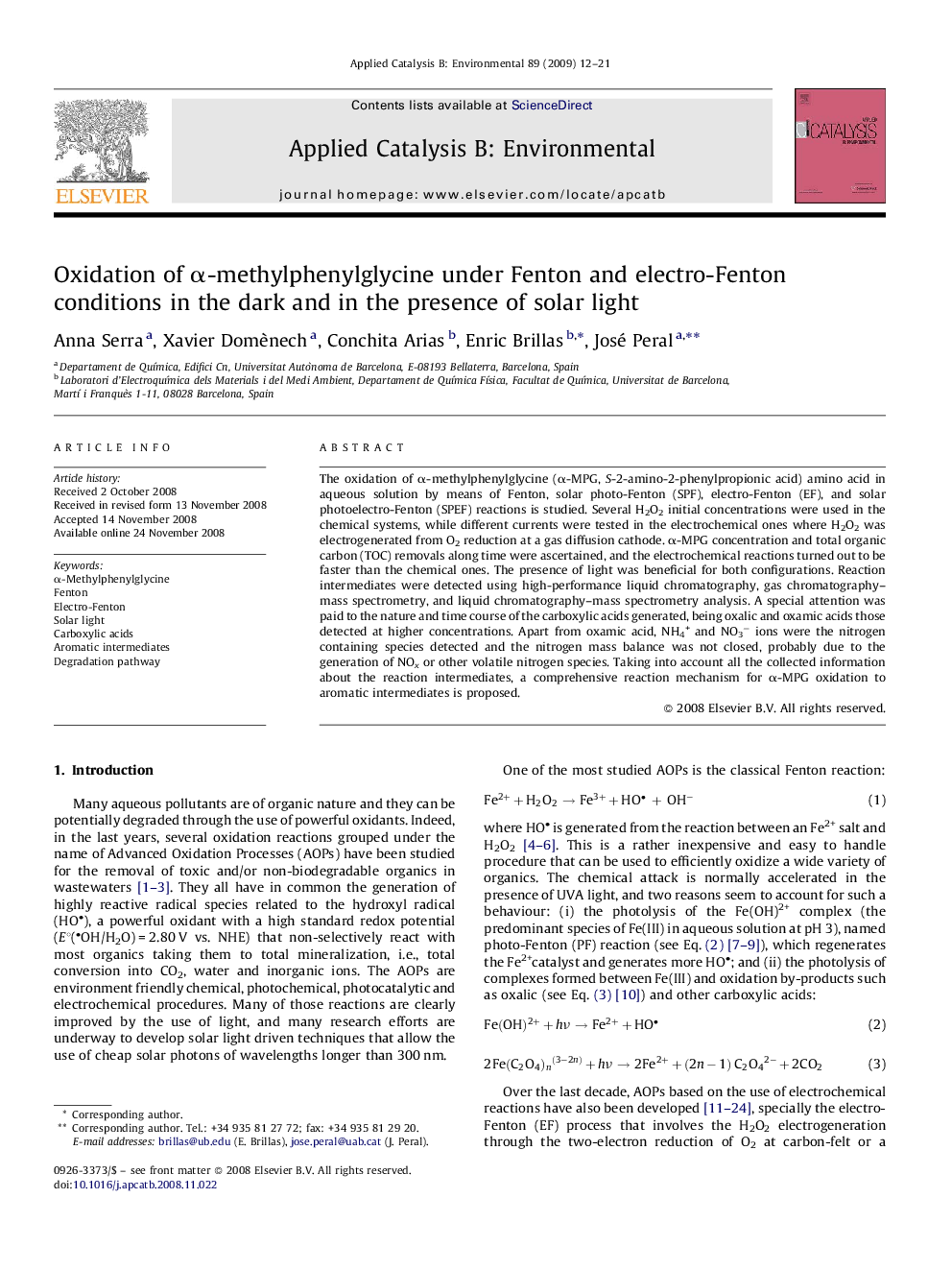| Article ID | Journal | Published Year | Pages | File Type |
|---|---|---|---|---|
| 47829 | Applied Catalysis B: Environmental | 2009 | 10 Pages |
The oxidation of α-methylphenylglycine (α-MPG, S-2-amino-2-phenylpropionic acid) amino acid in aqueous solution by means of Fenton, solar photo-Fenton (SPF), electro-Fenton (EF), and solar photoelectro-Fenton (SPEF) reactions is studied. Several H2O2 initial concentrations were used in the chemical systems, while different currents were tested in the electrochemical ones where H2O2 was electrogenerated from O2 reduction at a gas diffusion cathode. α-MPG concentration and total organic carbon (TOC) removals along time were ascertained, and the electrochemical reactions turned out to be faster than the chemical ones. The presence of light was beneficial for both configurations. Reaction intermediates were detected using high-performance liquid chromatography, gas chromatography–mass spectrometry, and liquid chromatography–mass spectrometry analysis. A special attention was paid to the nature and time course of the carboxylic acids generated, being oxalic and oxamic acids those detected at higher concentrations. Apart from oxamic acid, NH4+ and NO3− ions were the nitrogen containing species detected and the nitrogen mass balance was not closed, probably due to the generation of NOx or other volatile nitrogen species. Taking into account all the collected information about the reaction intermediates, a comprehensive reaction mechanism for α-MPG oxidation to aromatic intermediates is proposed.
